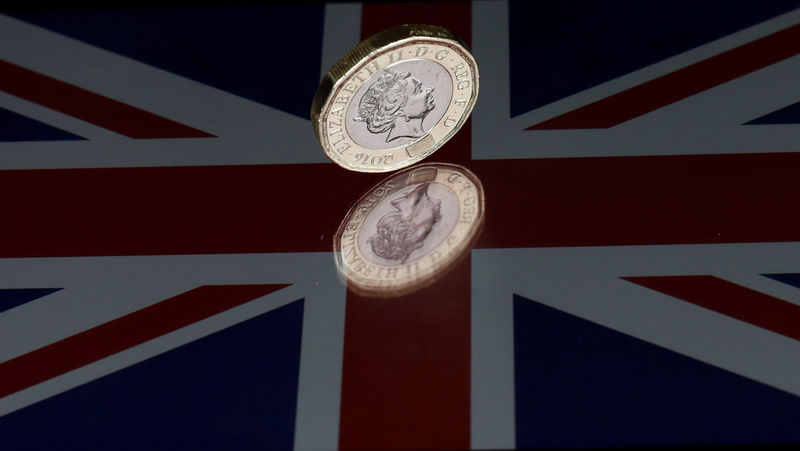(Bloomberg) -- Pound traders who were jolted by the reality that the U.K. could leave the European Union without a trade deal are rethinking their positions ahead of crisis talks in Brussels.
The relative cost of hedging against a weaker pound over the next week is now the highest among the world’s major currencies. Over the next month, it’s second only to the Turkish lira. And the jump in the currency’s one-week implied volatility this quarter is almost triple its nearest contender.
Investors were largely pricing in a bare-bones trade pact before the weekend. They were taken by surprise when the rhetoric suddenly turned negative, and the prospect of a deal seemed less likely. The pound fell as much as 1.6% against the dollar on Monday, and 1.3% versus the euro, the most since September.
RBC Europe Ltd. now puts the odds of a deal at 50-50, down from a 70% chance just a week ago, and sees the pound falling as much as 6% against the dollar within days if there’s no agreement. MUFG warns of an 8% plunge within a week.
“Currency traders and anyone investing in the pound at the moment is quite punch drunk after four years of trying to second-guess it,” Freddie Lait, chief investment officer of Latitude Investment Management, said in an interview with Bloomberg TV. “Any deal at this point would be good for sterling.”
Sell the Rally
Lait sees a 5% to 6% advance in the pound on a deal, and a similar move down if the U.K. crashes out. RBC expects sterling to rise 2% to 3%, but recommends selling the pound if it rallies. It fell 0.2% to $1.3352 as of 9:59 a.m. on Tuesday, and weakened to 90.85 pence per euro.
For now, the surprise is that the spot market isn’t reacting more to the news, explains Kit Juckes, a London-based chief currency strategist at Societe Generale (OTC:SCGLY) SA.
“Such a binary outcome as we are now facing, with Boris Johnson heading to Brussels for last-ditch talks and both sides urging the other to give ground, is bound to trigger a significant move,” he wrote in a note to clients. “That the outcome is coming in mid-December as markets dry up before us, just adds to the jeopardy.”
He sees the euro-pound cross rising to 95 pence if the deal is called off, and falling to 85 if there’s a breakthrough. “The only thing I don’t know, is how to place odds on these two outcomes,” Juckes said.
Here are the possible outcomes to watch out for as events unfold.
A Trade Deal
- Sterling may find it difficult at first attempt to push through a line in the sand for the currency: its 2019-2020 highs at $1.3514 to $1.3539
- A break past that would target the 76.4% Fibonacci retracement of the pound’s losses in the April 2018 - March 2020 period, which comes at $1.3677
- Should the pound close above this level, there’s little technical resistance until the $1.40 handle; another key level is found at $1.3620, the 38.2% Fibonacci retracement of the pair’s drop since September 2014
Talks Breakdown
- The first big level to watch on a fall in cable comes around the $1.31 area; mid-November lows lie at $1.3106-09 while the 55-daily moving average is currently at $1.3096
- The lower end of a multi month channel comes Tuesday at around $1.3033 and may set the tone for the currency’s bias into 2021
- A close below could suggest deeper losses will be in play with strong fading interest, possibly surfacing around $1.2850, near the October lows
Mini Deal
- If some kind of compromise is struck, the pound may find itself moving within short-term range extremes
- Cycle highs at $1.3539 will serve as strong resistance to the topside, with good chances that cable largely remains within a $1.32-$1.34 range into year-end
©2020 Bloomberg L.P.
